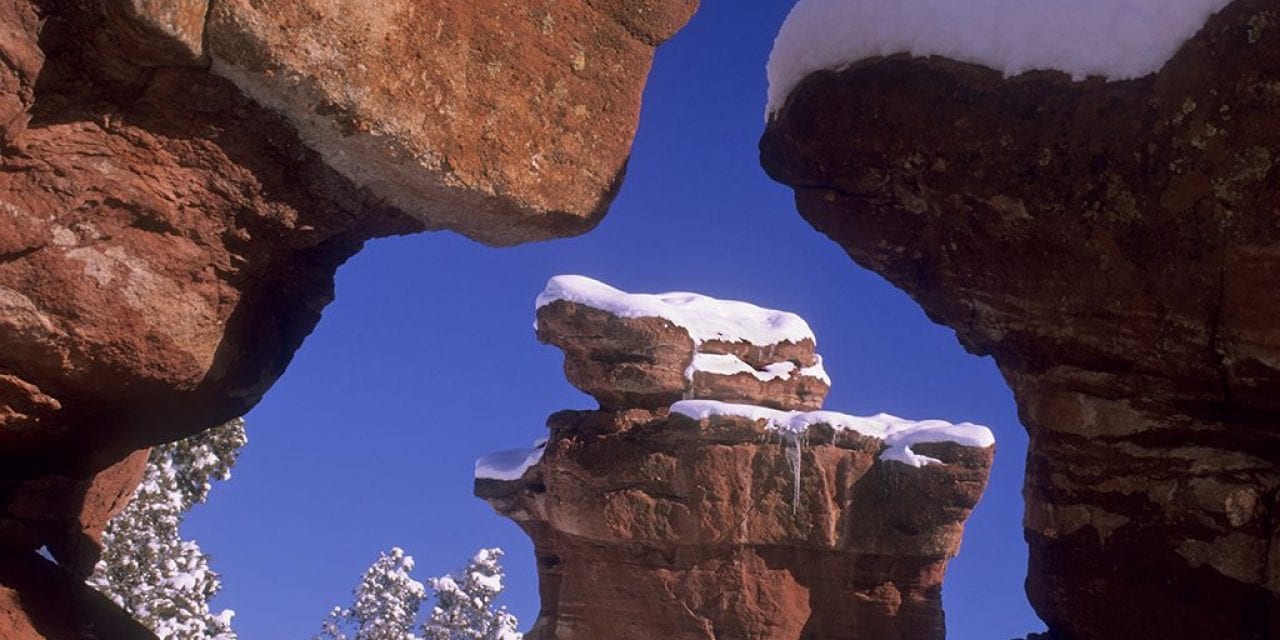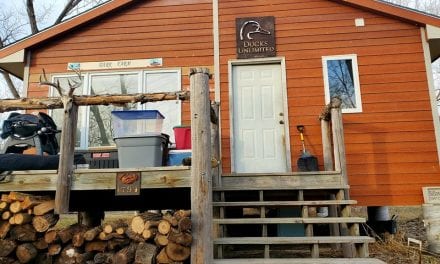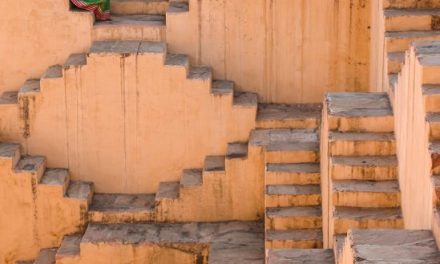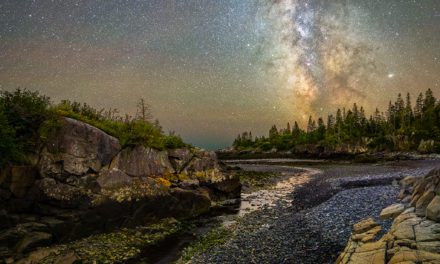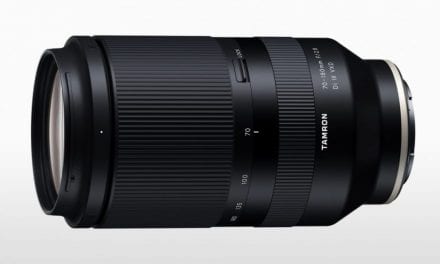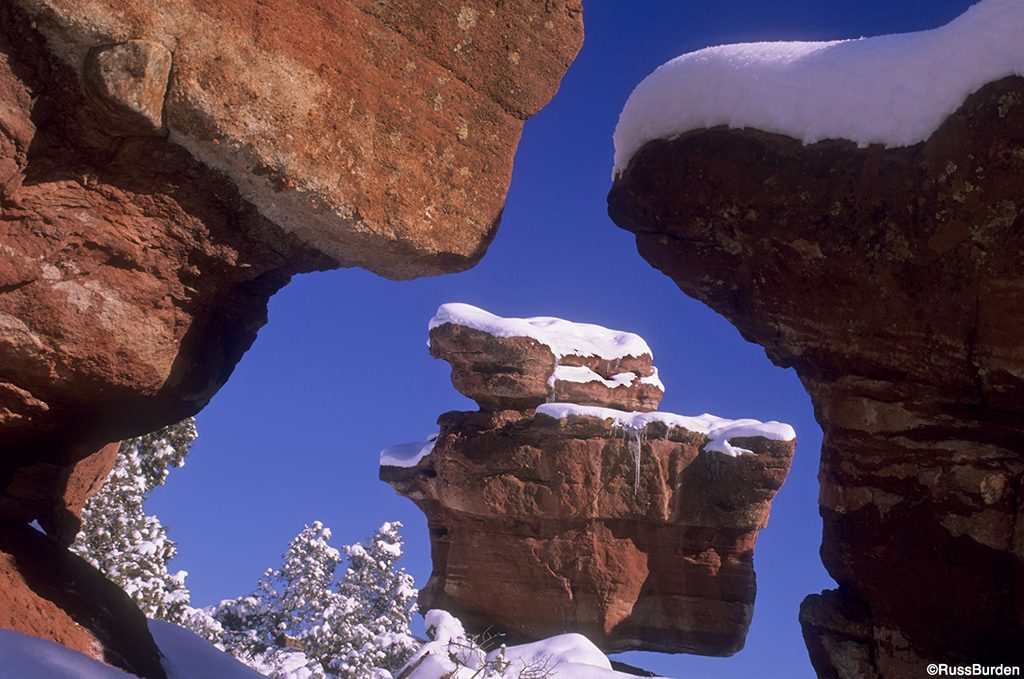
I love to exploit the beauty of a fallen snow, especially when it’s followed by a crisp, clear morning sunrise. The setting becomes a winter wonderland in its expanse. If you decide to explore it with macro or telephoto eyes, it becomes a miniature world of white on white and reveals patterns, shapes and textures. Subject wise, the possibilities are endless. The surrounding land takes on a fresh and pristine look. Whether you look to the left, right, in front or behind you, there’s something new and different toward which you can point your lens. The natural world becomes a virgin setting molded by a fluff of white pillows and frost that’s painted with immaculate and pristine beauty.
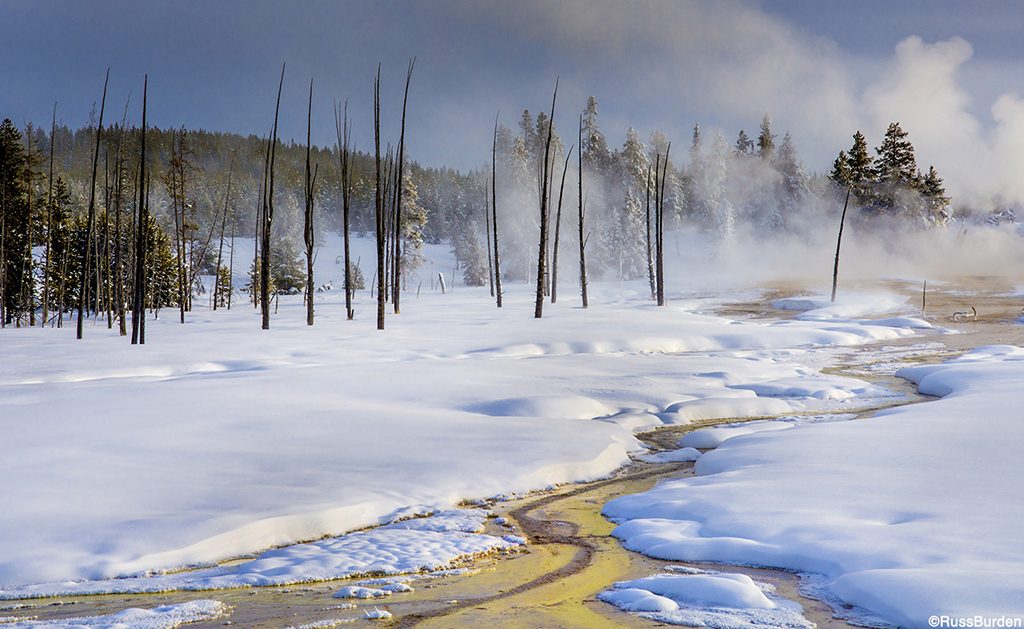
Snow photography provides a number of variables depending on your timing and the conditions. One type of snow photography deals with making images while snow is falling. The skies are often gray and overcast. Depending on when the snow began determines the amount of white that drapes the landscape. A second type deals with crisp, clean sunlight reflecting off its surface. The light is intense and bright and contrast is often high. A third type finds photographers searching out unspoiled parcels of land that depict a snow’s purity. Wet snow works well for this as it clings to trees and bushes and opens a plethora of possibilities for making abstract images and winter wonderlands.
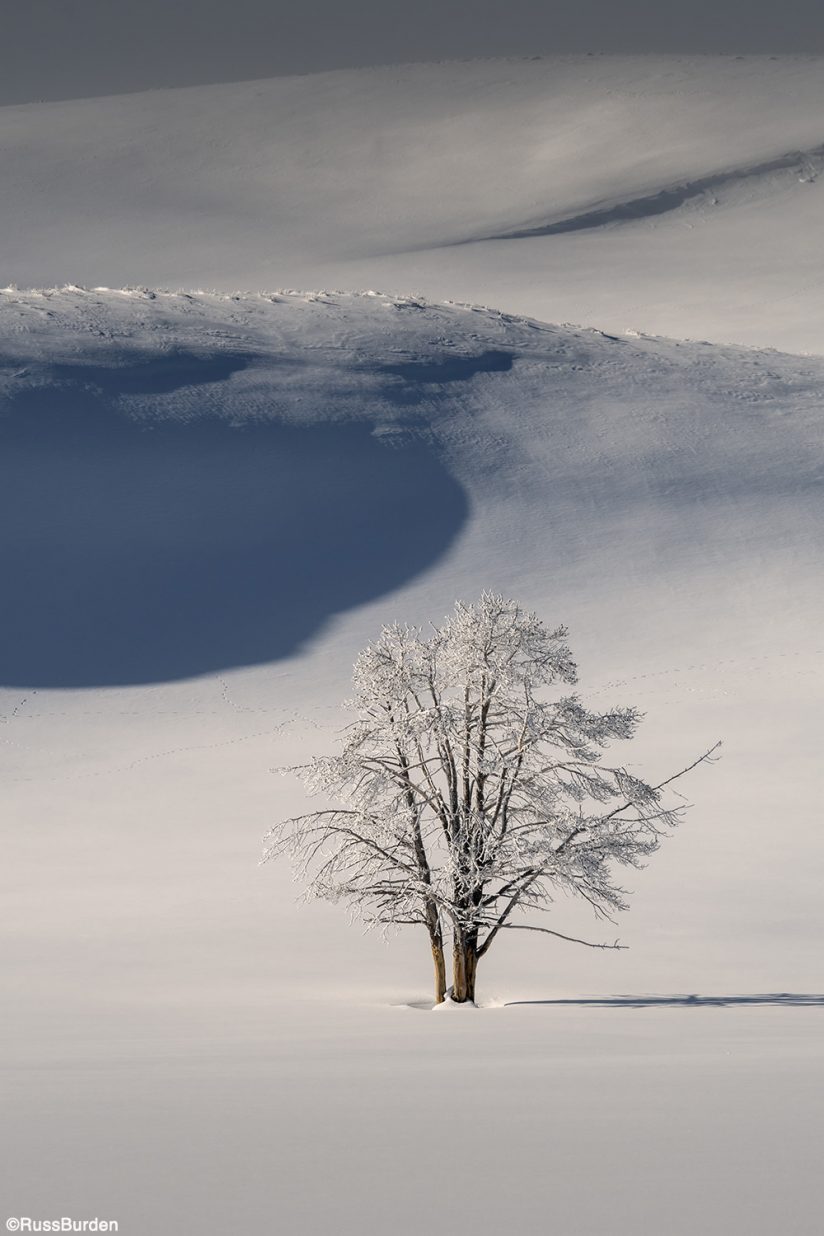
Regardless of the conditions you encounter when you’re immersed in a field of white, you need to confront technical issues associated with acquiring proper exposures. Metering problems need to be addressed. Snow reflects a magnitude of light, giving false meter readings that result in gray tones instead of white. To prevent this, dial in plus compensation to override the provided meter reading. Just how much to dial in depends on how much of the composition is snow, how much shadow area there is, how intense the sun is and whether the subject is back- or front-lit.
Check your histogram after each exposure. Add compensation so pixels are depicted on the right side but there are no spikes touching the right edge. You’ll need to do this even if it’s cloudy. Basically, the brighter it is, the more you’ll need to add compensation. If the conditions are extremely contrasty, you’ll need to create a bracketed series of exposures and run the images through high dynamic range software.
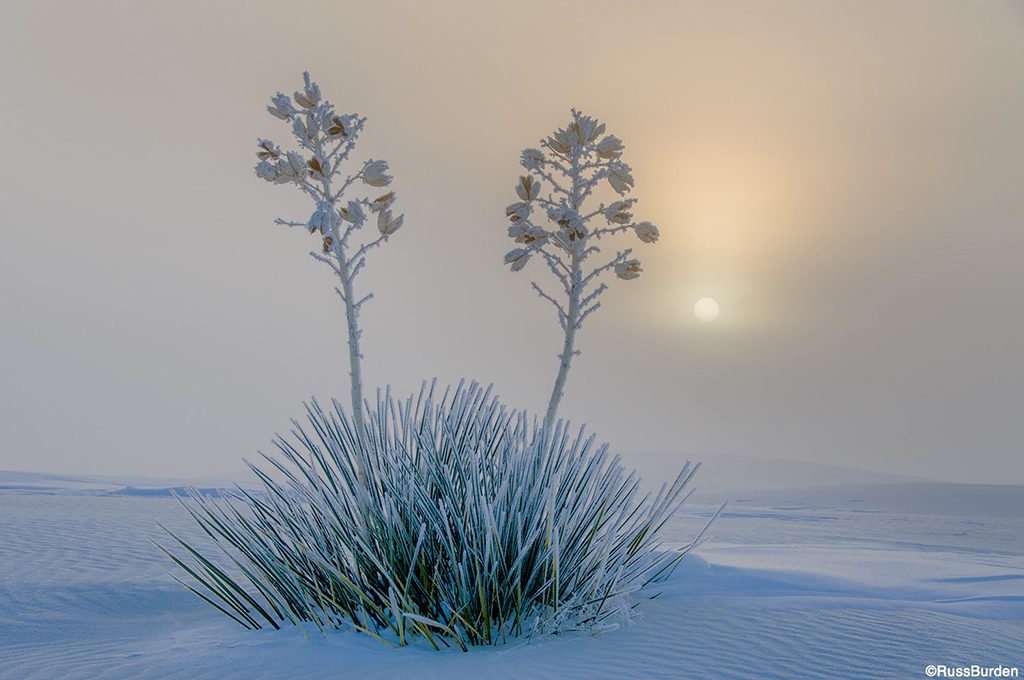
Mood
Depending on how much direct sun the scene receives determines the mood of the image. Bright sun evokes an open and airy feeling that translates to smiles, happiness, euphoria and joy. While snow is falling, the implied feeling is more ominous dictated by the gray accompanied by the psychological impact that it’s stormy. This, in turn, invokes feelings of melancholy, gloom and woe. Photographing in both of the above conditions can net great images. The one aspect of snow photography that doesn’t turn me on as much is when the light is flat gray. On the plus side, it’s a good time to turn to wildlife photography as the light is even on the subject. Increase your ISO in case some action is encountered so you’ll be able to record the animal sharply.
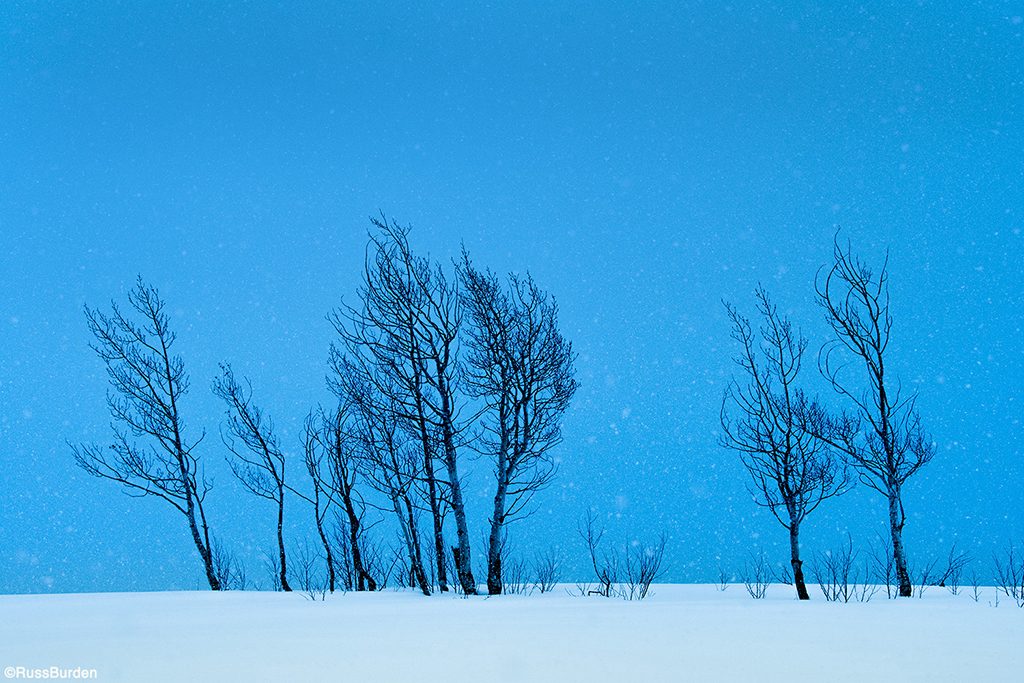
White Balance
When it comes to post-processing, don’t be afraid to experiment with different white balances. I tend to add a touch of blue to the RAW file to create a cool feeling. Don’t go overboard as you want the effect to look believable. There have been a few images where I’ve played and exaggerated the blue and it worked. As with every other type of photography, post-processing can be very subjective. If you work within reason, anything goes.
Visit www.russburdenphotography.com for information about his nature photography tours and safari to Tanzania.
The post Landscapes In Snow appeared first on Outdoor Photographer.

